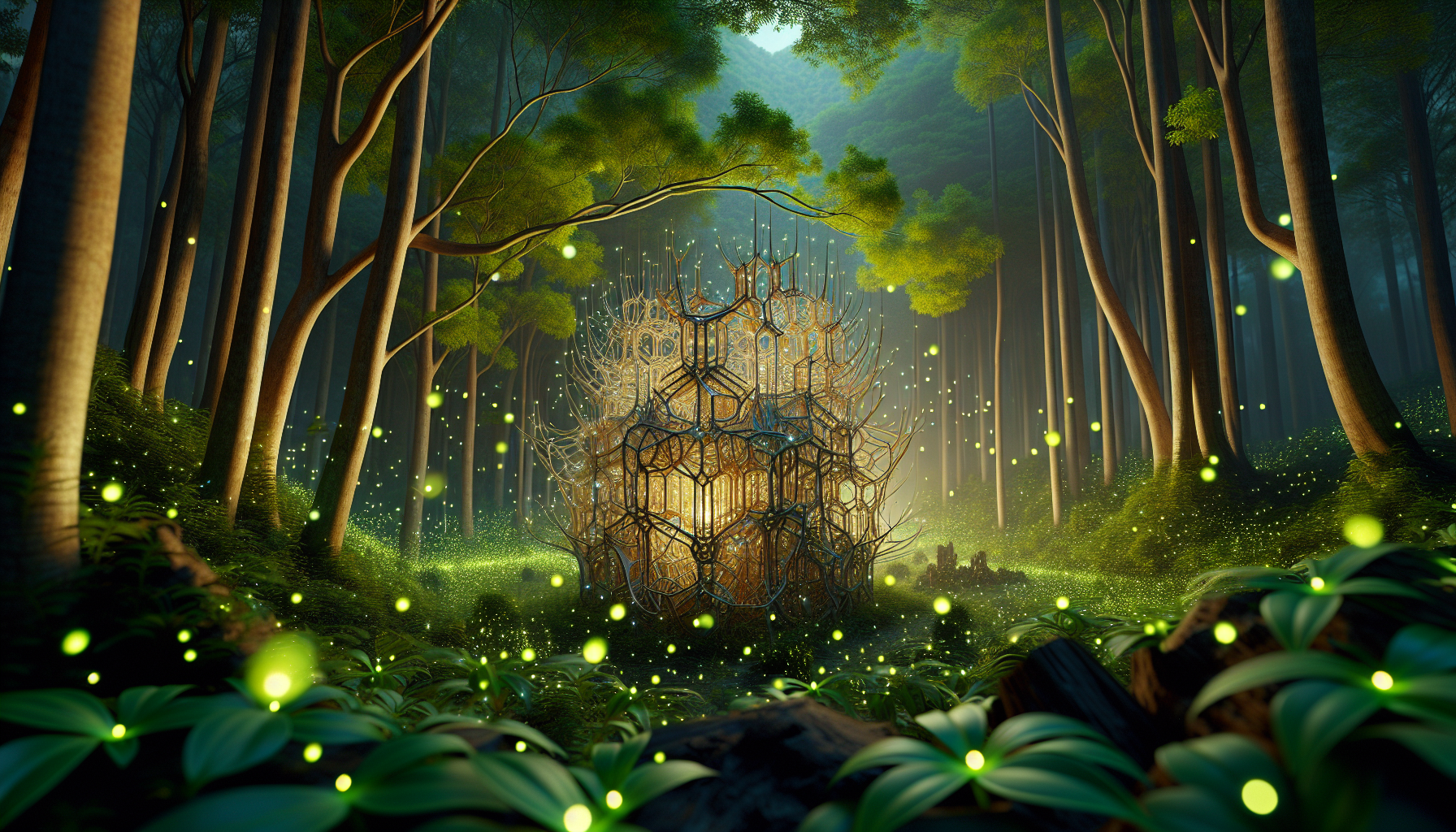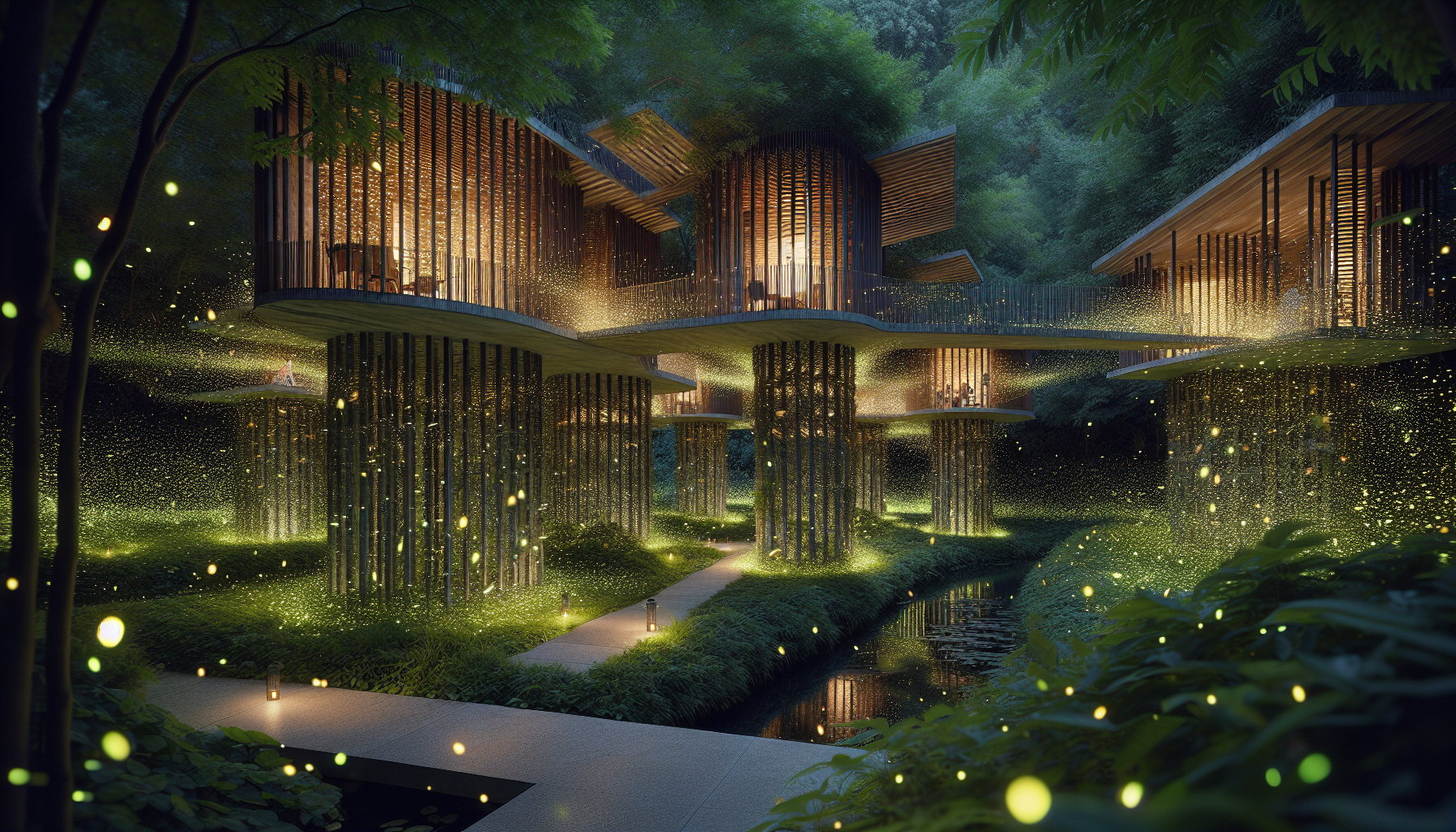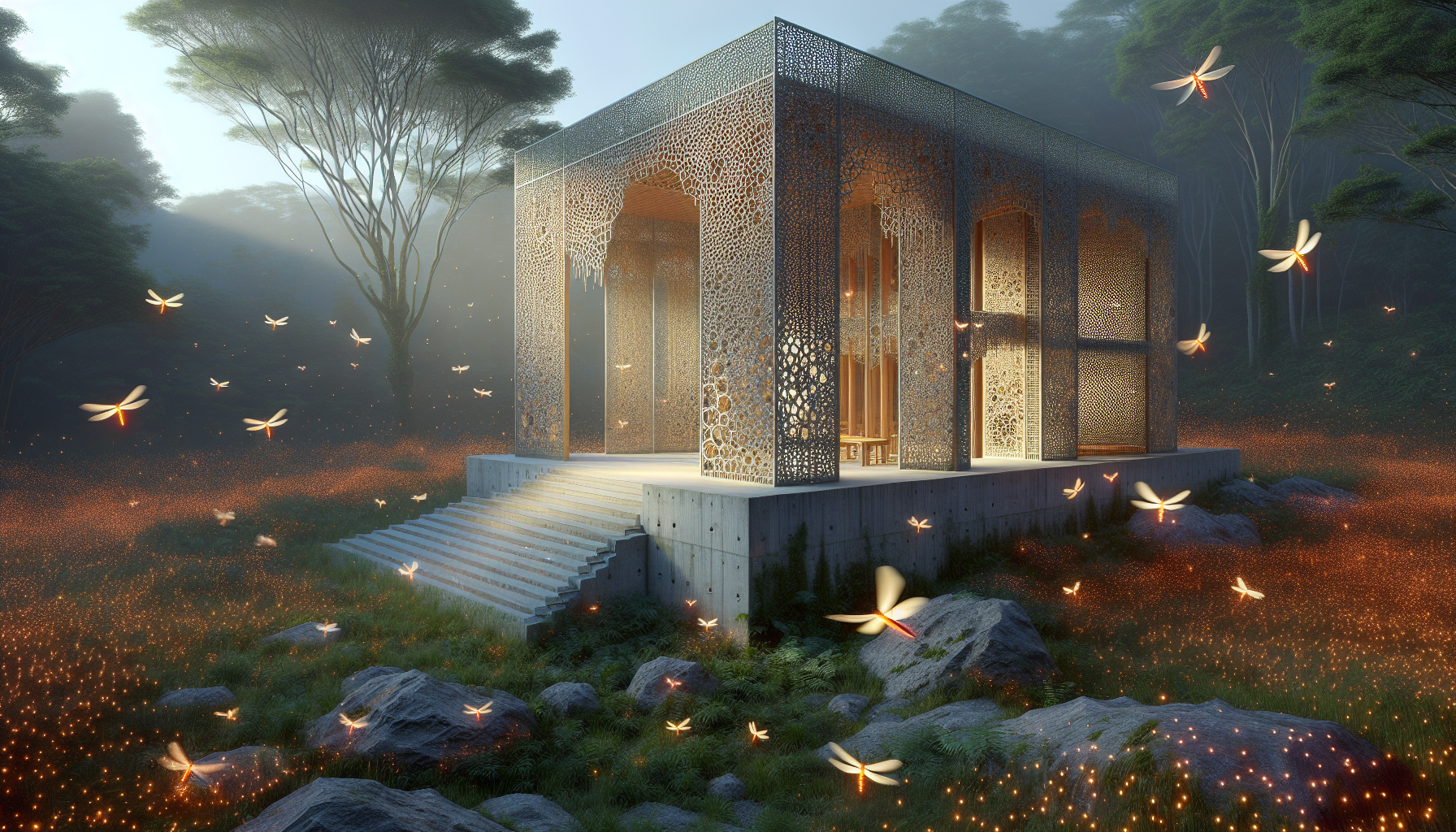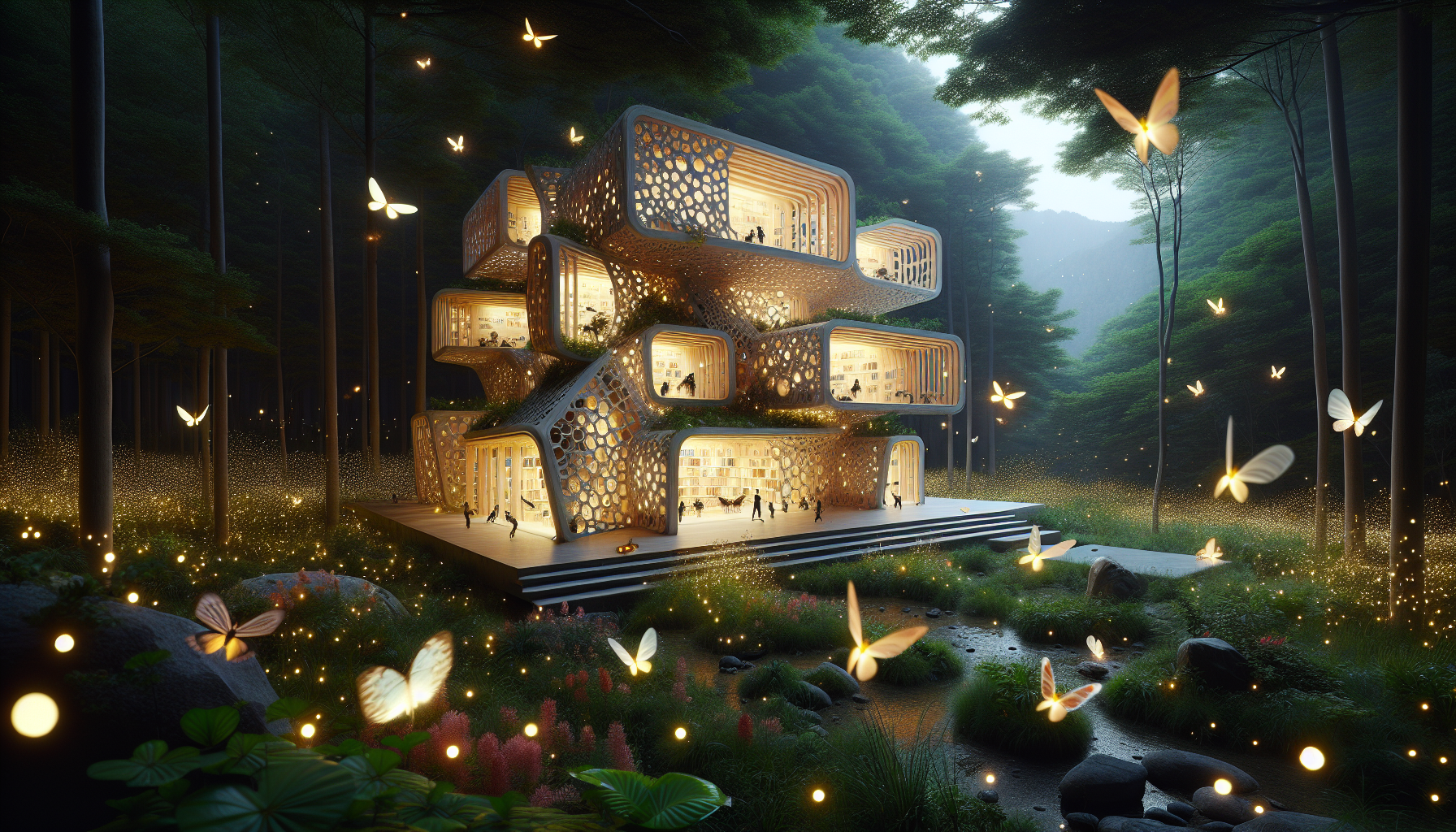In the delicate balance of our ecosystems, insects play an indispensable role, yet their populations are declining at an alarming rate due to urbanization, pesticide use, and climate change. As we continue to expand our cities and modify rural landscapes, it becomes crucial to rethink our approach to architecture and urban planning. Enter Firefly Architecture—a groundbreaking concept that seeks to blend ecological preservation with modern design by creating microstructures specifically engineered to attract and sustain various insect species. This innovative approach not only supports biodiversity but also holds the potential to revolutionize the way we perceive and interact with our built environments. 🏙️🌿
Imagine walking through a city park or a countryside trail where artfully designed structures not only captivate the human eye but also serve as bustling hubs of insect activity. These microarchitectures, inspired by the luminescent fireflies that often captivate us on warm summer nights, are more than just aesthetically pleasing installations; they are functional habitats meticulously crafted to meet the unique needs of different insect species. By studying the behavioral patterns and environmental preferences of these creatures, architects and ecologists are collaborating to create spaces that encourage their presence and contribute to the ecological health of both urban and rural settings.
In this article, we will delve into the fascinating world of Firefly Architecture, exploring its origins, its current applications, and its promising future. We will examine the design principles that guide the creation of these microstructures, highlighting successful case studies that demonstrate their impact on local ecosystems. Furthermore, we will discuss the broader implications of integrating insect-friendly designs into our environments, from enhancing pollination and pest control to fostering a greater sense of connection between humans and nature. Whether you are an architect, an environmentalist, or simply someone intrigued by the intersection of design and ecology, this exploration offers valuable insights into how small structures can make a monumental difference. Prepare to be inspired by a vision of the future where our buildings not only serve human needs but also nourish the natural world. 🐞🌍
The Concept of Firefly Architecture
Firefly architecture represents a groundbreaking approach to design, where structures are intentionally crafted to attract specific insects, particularly fireflies, in both urban and rural settings. This concept not only enhances biodiversity but also offers unique aesthetic and ecological benefits. The idea stems from a blend of biomimicry and sustainable architecture, focusing on creating micro-environments that replicate the natural habitats of these insects. This initiative aims to address the growing concerns regarding the declining populations of fireflies due to urbanization and habitat loss.
The principles of firefly architecture are rooted in understanding the biology and ecology of fireflies. These insects are known for their bioluminescence, which they use for communication, mating, and predation. By designing structures that mimic the natural elements of their habitats, such as moisture levels, vegetation types, and ambient light conditions, architects can create spaces that are not only habitable but also attractive to these insects. This approach aligns with the broader goals of conservation biology, which seeks to preserve biodiversity by integrating natural elements into human-made environments.
One of the critical aspects of firefly architecture is the use of natural and sustainable materials. These materials are selected for their ability to maintain the environmental conditions necessary for firefly habitation. For instance, wood and stone can regulate temperature and humidity, while specific plants can provide food and shelter. Moreover, these structures are designed to minimize artificial light pollution, a significant threat to fireflies, as it disrupts their mating signals. By reducing light pollution, these designs not only benefit fireflies but also improve human well-being, as studies have shown the negative impacts of excessive artificial light on human health.
Designing Microstructures for Insect Attraction
The design of microstructures in firefly architecture involves a meticulous process of aligning architectural elements with the ecological requirements of target insect species. This process begins with extensive research on the behavior, life cycle, and habitat preferences of fireflies. Architects and ecologists collaborate to identify key environmental parameters such as humidity, temperature, and vegetation that influence firefly presence and activity. By tailoring these factors within microstructures, the design ensures that the environment is conducive to attracting and supporting firefly populations.
Innovative design strategies are employed to integrate these microstructures seamlessly into urban and rural landscapes. For instance, vertical gardens and green roofs are popular features in firefly architecture. These elements not only provide the necessary greenery but also enhance urban biodiversity by serving as habitats for various insects. Moreover, water features such as small ponds and streams are incorporated to mimic the natural breeding sites of fireflies. These water bodies are designed to maintain optimal water quality and prevent the proliferation of mosquitoes, ensuring a healthy ecosystem for fireflies and other aquatic life.
Another crucial component of microstructure design is the use of bioluminescent materials. These materials are strategically placed to enhance the visual appeal of the structures while serving a functional purpose. By emitting soft, ambient light, these materials create an inviting environment for fireflies without causing light pollution. This innovative use of bioluminescent materials not only attracts fireflies but also offers a mesmerizing visual experience for human observers, blurring the lines between architecture and art.
Comparative Analysis of Urban and Rural Applications
Firefly architecture presents unique challenges and opportunities in both urban and rural contexts. In urban areas, the primary challenge is integrating these structures within densely populated environments with limited green space. However, urban applications of firefly architecture offer significant potential for enhancing biodiversity and improving the quality of life for city dwellers. By incorporating green walls, rooftop gardens, and bioluminescent pathways, urban environments can be transformed into vibrant ecosystems that support firefly populations and other wildlife.
In contrast, rural applications of firefly architecture benefit from the availability of larger spaces and existing natural habitats. In these settings, architects have more freedom to design expansive structures that closely mimic natural environments. Rural firefly architecture often involves the creation of large-scale ecological corridors and habitat restoration projects that connect fragmented landscapes and support a diverse array of species. This approach not only attracts fireflies but also benefits other wildlife by providing critical habitat and resources.
Despite the differences in urban and rural applications, the core principles of firefly architecture remain consistent. Both contexts prioritize the use of sustainable materials, ecological design principles, and community engagement to ensure the success of these initiatives. By fostering collaboration between architects, ecologists, and local communities, firefly architecture can create resilient and sustainable environments that support both human and insect populations.
| Aspect | Urban Application | Rural Application |
|---|---|---|
| Space Availability | Limited, requires creative solutions like vertical gardens | Ample, allows for expansive ecological designs |
| Design Focus | Integrating green spaces into built environments | Restoration of natural habitats and ecological corridors |
| Challenges | Space constraints, high light pollution | Balancing human activities with conservation efforts |
| Opportunities | Enhancing urban biodiversity and quality of life | Supporting diverse wildlife and restoring ecosystems |
For a visual representation of how firefly architecture can transform urban and rural environments, watch this insightful video: “The Future of Urban Biodiversity” by National Geographic.
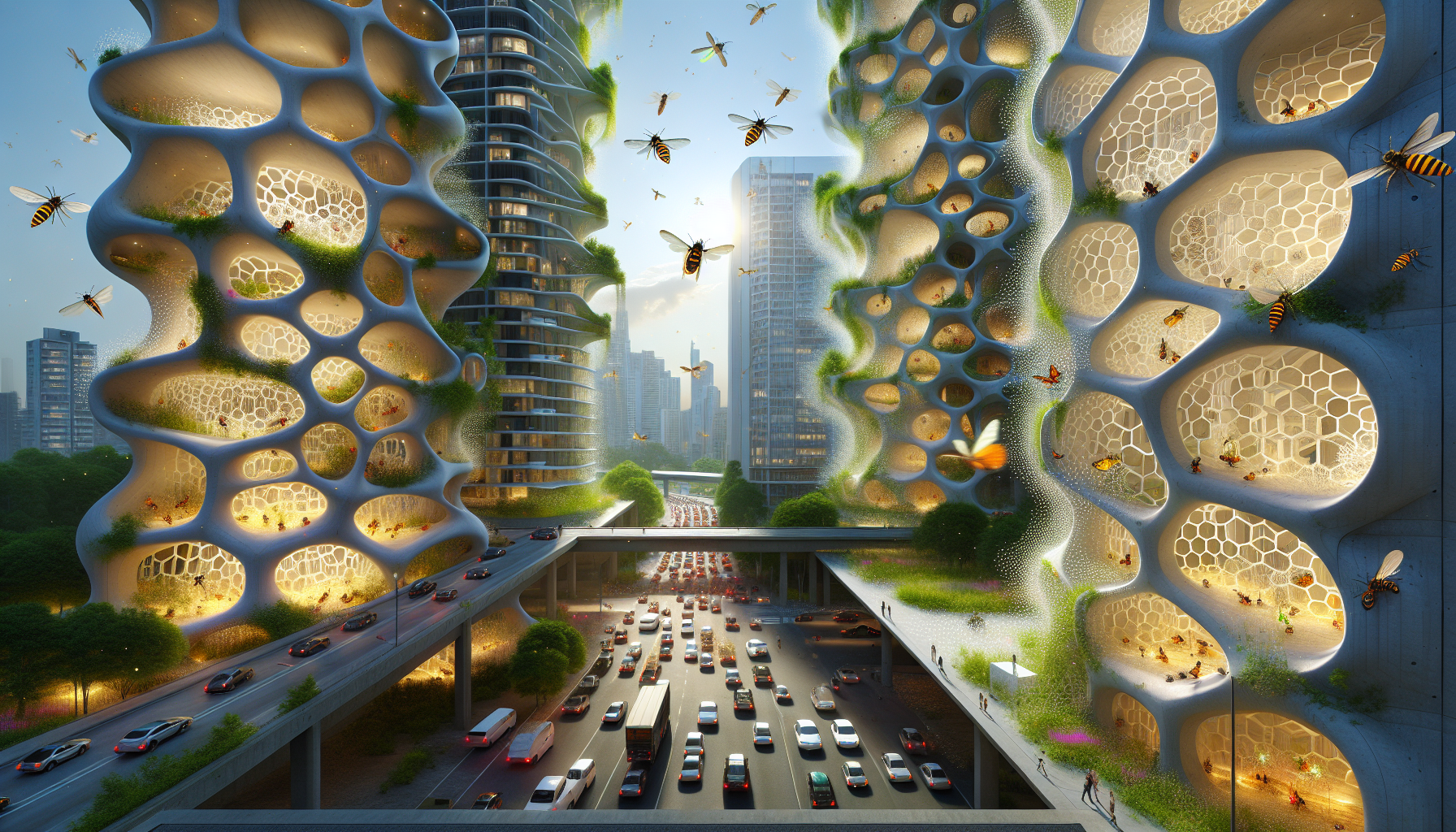
Conclusion
Building the Future with Firefly Architecture: A Conclusion
In reflecting on the myriad insights shared throughout this article, it becomes evident that the innovative concept of Firefly Architecture stands as a beacon of possibility in both urban and rural settings. This architectural approach, focused on crafting microstructures specifically designed to attract certain insects, particularly fireflies, offers a glimpse into how human ingenuity can harmoniously align with nature’s intricate tapestry.
The core of Firefly Architecture lies in its ability to balance aesthetic appeal with ecological functionality. By integrating these structures into various environments, we not only enhance biodiversity but also contribute to the ecological health of our surroundings. These architectural designs are not mere shelters; they are dynamic ecosystems, fostering the delicate interplay between insects and the natural environment. The profound impact of such structures on urban areas is particularly noteworthy. Cities, often seen as concrete jungles, can transform into vibrant ecosystems through these innovative designs. Urban planners and architects have a unique opportunity to integrate Firefly Architecture into city landscapes, creating green spaces that support insect life and, by extension, the health of the ecosystem. This initiative can lead to healthier urban environments, promoting a greater appreciation for biodiversity among city dwellers.
Moreover, the application of Firefly Architecture in rural settings holds significant promise. These structures can serve as sanctuaries for various insect species, contributing to agricultural productivity through natural pollination processes. Farmers and rural communities can harness these designs to maintain ecological balance, reducing reliance on chemical pesticides and promoting sustainable farming practices.
Throughout this exploration, the intricate relationship between architecture and ecology has been highlighted. The principles of Firefly Architecture encourage us to rethink conventional architectural paradigms, placing a greater emphasis on ecological considerations. By doing so, we foster a more sustainable future, where architecture not only serves human needs but also nurtures the environment.
The importance of this topic cannot be overstated. As we face unprecedented environmental challenges, innovative solutions like Firefly Architecture offer a path forward. They remind us of the interconnectedness of all life forms and the vital role that insects play in maintaining ecological balance. By attracting specific insects, these microstructures contribute to the preservation of biodiversity, a crucial component in the fight against climate change and environmental degradation.
In embracing Firefly Architecture, we also embrace a future where urban and rural landscapes coexist with nature. This approach fosters a deeper understanding of our environment and encourages us to be proactive stewards of the earth. The inspiration drawn from these designs can ignite a broader movement towards environmentally conscious architectural practices, influencing policies and encouraging community engagement.
As we conclude this exploration, it is essential to recognize the potential for collaboration across disciplines. Architects, ecologists, urban planners, and community members must work together to implement Firefly Architecture effectively. By fostering a collaborative spirit, we can maximize the impact of these structures and ensure their integration into various landscapes is both thoughtful and beneficial.
I invite you, dear reader, to reflect on the insights gained from this discussion. Consider how Firefly Architecture could be implemented in your community or environment. Engage in conversations with others, share the knowledge you’ve acquired, and inspire collective action towards a more sustainable future. By participating in this movement, you become an agent of change, contributing to a world where architecture and nature coexist harmoniously.
Feel free to share your thoughts, ideas, or experiences related to Firefly Architecture in the comments section. Your input is invaluable and can inspire others to take action. Additionally, consider sharing this article with your network, encouraging a broader discussion about the integration of ecological principles into architectural design.
As we look to the future, let us draw inspiration from the simplicity and elegance of Firefly Architecture. Let it serve as a reminder of the beauty that emerges when we align human creativity with the rhythms of nature. Together, we can build a future that honors and nurtures the delicate balance of life on earth. 🌱
For further reading and resources, explore these active links:
1. National Wildlife Federation: Supporting Insect Biodiversity
2. Biomimicry Institute: Nature-Inspired Solutions
3. World Wildlife Fund: Urban Biodiversity
References:
– “Designing for Biodiversity: The Role of Architects” by the Biomimicry Institute. Available at biomimicry.org
– “Urban Ecosystems: Integrating Nature into the City” by the World Wildlife Fund. Available at worldwildlife.org
Let us build a future that shines brightly, much like the gentle glow of a firefly in the night.
Toni Santos is a visionary artisan and conceptual designer who channels the beauty of living organisms into structural expression. At Zureste, Toni explores the intricate elegance of insect anatomy, organic flow, and bioinspired design to create art that feels both natural and otherworldly.
Each creation Toni brings to life reflects a harmonic tension between structure and softness, wildness and control — echoing the complex intelligence found in the natural world. From beetle-like silhouettes to root-shaped contours, his work blurs the lines between biology, sculpture, and modern art.
Guided by fascination for metamorphosis, evolution, and pattern in nature, Toni’s pieces embody transformation. His BioLight Collection and conceptual series like Insect Type and Structure Aesthetics offer viewers more than aesthetic value — they present immersive experiences of living design.
As the creative force behind Zureste, Toni invites us to rethink beauty, architecture, and identity through a new lens — one shaped by wings, bones, spirals, and the microscopic poetry of the organic.
🌿 His creations reflect:
-
Design deeply rooted in the geometry of life
-
Inspiration from insects, roots, and the unseen natural order
-
A blend of science, spirituality, and visual storytelling
Whether you’re a lover of strange beauty, an admirer of evolution’s artistry, or a creative mind seeking something different, Toni welcomes you into a world where living forms become meaning, and surreal becomes sublime.


